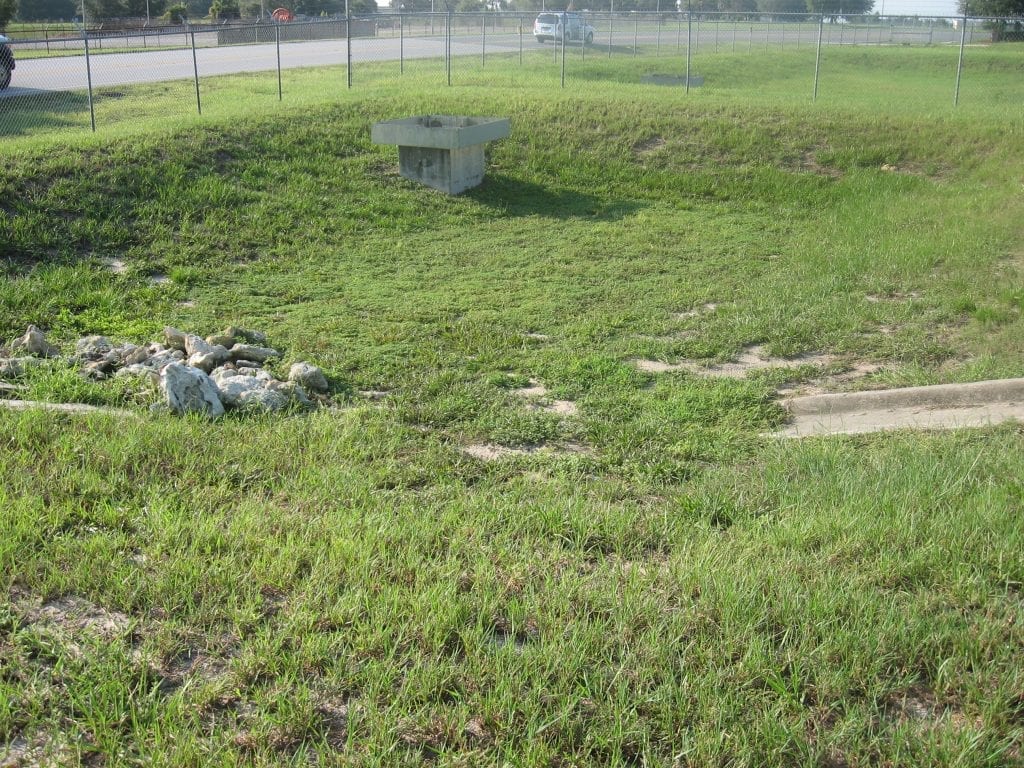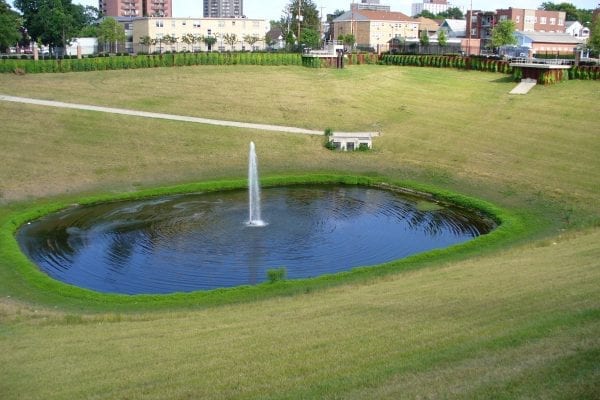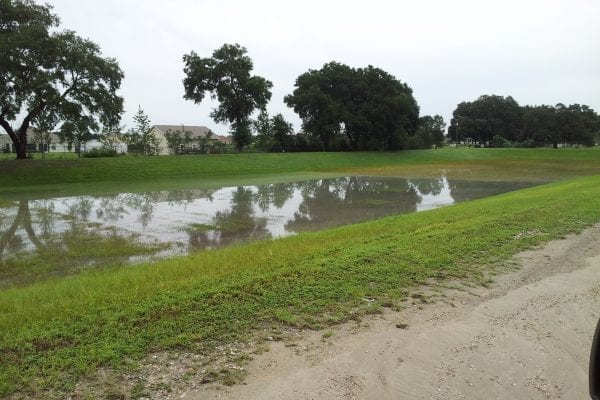Though we rarely think about them, a stormwater management system is a standard, and mandated, feature of every commercial property. Whether it uses a dry pond or a wet pond or some other structure, a stormwater management system is designed to prevent excessive runoff from your property onto a neighboring property, as well as to process pollutants from impervious areas (such as parking lots and buildings).
The stormwater management system is generally low maintenance, and easy to forget about. Unfortunately, forgetting about it entirely can lead to expensive problems. Here are the most common problems we hear about, along with their solutions.
Flooding
When a property floods after a storm, the stormwater management system is the most likely culprit. Often, flooding appears first in a parking lot area, but it can impact buildings and neighboring properties. A flooded parking lot can cause hydroplaning and property damage, in addition to making the lot unusable during storms. Flooding in buildings and on neighboring properties is a major liability that can lead to property damage and expensive litigation.
Stormwater flooding is usually caused by some sort of obstruction in the system, and is often easily resolved with a visual inspection and clearing of any blockage. A knowledgeable stormwater management professional will inspect the parking lot to examine the storm drains that carry water out of the parking lot into the stormwater management system. They’ll also check the outlet from the pond itself. Usually, clearing any blockages will resolve common problems, though occasionally an engineered solution is required if the piping is found to be failing.
Occasionally, distress to the parking lot itself can be the culprit. Parking lot pavement is engineered at the time of installation to direct runoff away and into the stormwater management system. Failing pavement can cause buckling and shifting that may drain water in the wrong direction, thus leading to flooding and erosion.
Erosion
When poorly designed or maintained, stormwater pond embankments can erode and lead to failure. If caught early, erosion can be checked inexpensively with straw bales, netting, and plantings. If left to continue, erosion can cause the entire system to fail, leading to flooding and other problems, plus expensive repairs. The best solution is to monitor the pond periodically for signs of erosion and deal with them immediately.
Overgrowth in Dry Ponds
Dry ponds function by allowing water to percolate quickly through the soil, thus filtering the contaminants. Heavy vegetative growth restricts the soil’s ability to percolate, by replacing sand and loam with roots. The result, eventually, is flooding and the passage of unfiltered water into neighboring properties, which can lead to lawsuits. The solution is simple—maintain dry ponds with regular mowing, and remove any woody growth at the first sign. If you already have a dry pond with heavy growth, get someone to remove the growth, and then schedule maintenance to keep it at bay.
Missing or Damaged Fencing
Many stormwater management systems do not require fencing. Ponds can be left without fencing provided the embankments aren’t too steep. In some cases, however, due to space constraints, the embankments will exceed the allowable slopes and/or may even need a wall in order to accommodate the required volume of water. In this case, the pond will be installed with a fence. This fence is a required element. If the fence fails and someone falls into the pond, the property owner can be liable. This problem is simple to solve by monitoring the condition of fencing, and repairing and replacing it as necessary.
Non-Compliance
Stormwater management systems are regulated by your municipality and/or Water Management District, and most require periodic inspection and certification. If you’re not keeping up with your certification, you’ll receive a noncompliance letter. You can read more about that letter and what to do about it here.
In general, a well-designed stormwater management system is a low-maintenance property feature, but that doesn’t mean property owners can afford to ignore its existence. Routine maintenance and regular inspections will help ensure you don’t encounter expensive problems.
More questions? You can speak with a qualified stormwater management expert right now by contacting our team.





